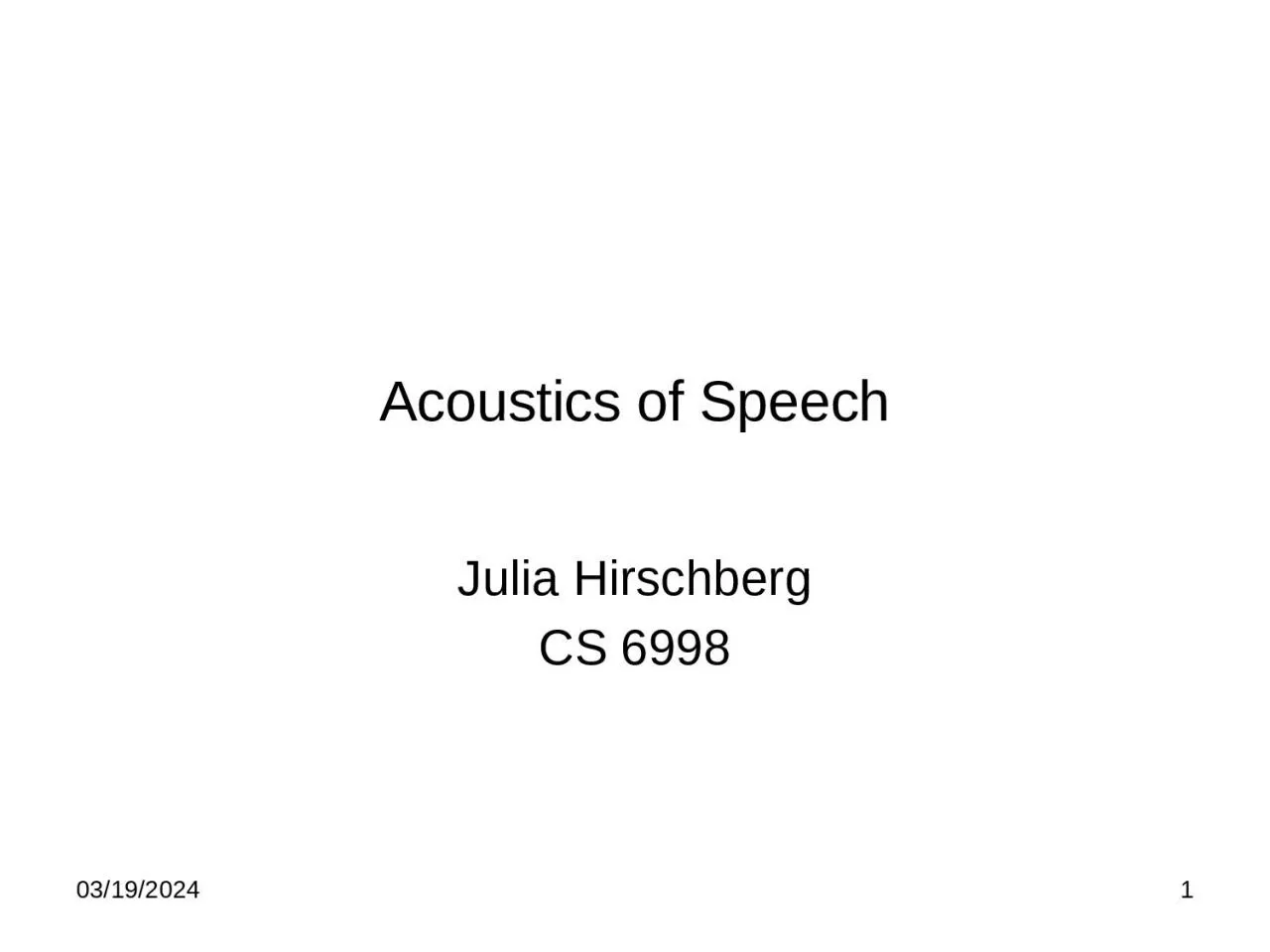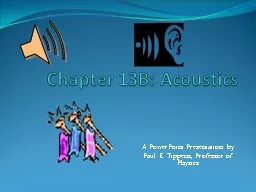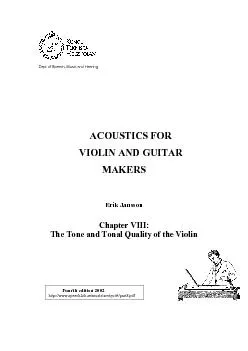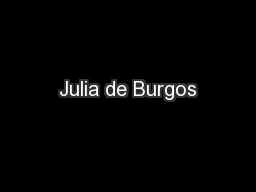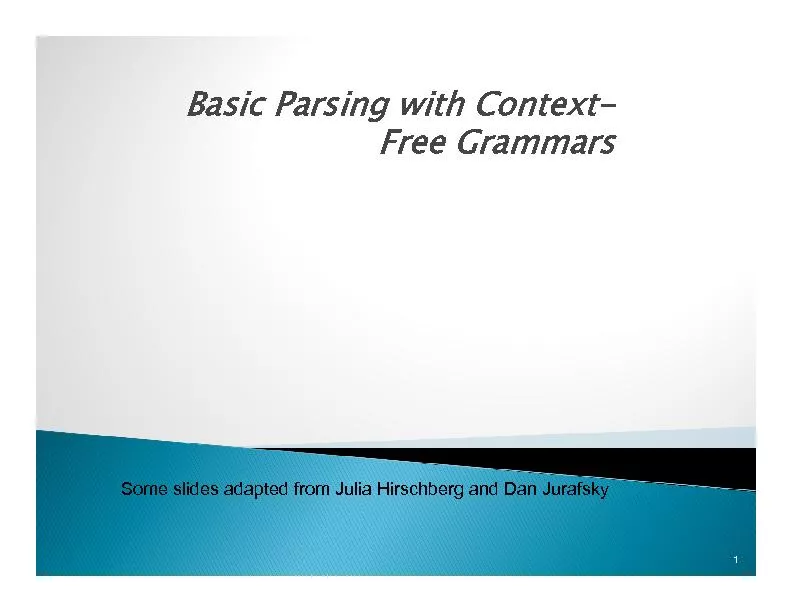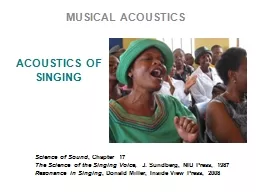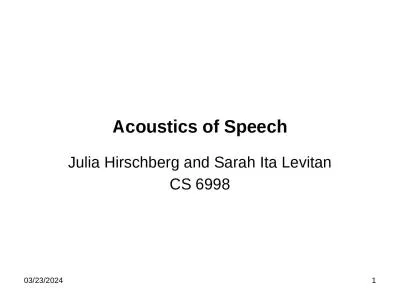PPT-Acoustics of Speech Julia Hirschberg
Author : faith | Published Date : 2024-03-13
CS 6998 13123 1 Assignments If you were unable to do the Week 2 assignment last week for any reason please do the Week 2 late for students signing up late asap
Presentation Embed Code
Download Presentation
Download Presentation The PPT/PDF document "Acoustics of Speech Julia Hirschberg" is the property of its rightful owner. Permission is granted to download and print the materials on this website for personal, non-commercial use only, and to display it on your personal computer provided you do not modify the materials and that you retain all copyright notices contained in the materials. By downloading content from our website, you accept the terms of this agreement.
Acoustics of Speech Julia Hirschberg: Transcript
Download Rules Of Document
"Acoustics of Speech Julia Hirschberg"The content belongs to its owner. You may download and print it for personal use, without modification, and keep all copyright notices. By downloading, you agree to these terms.
Related Documents

